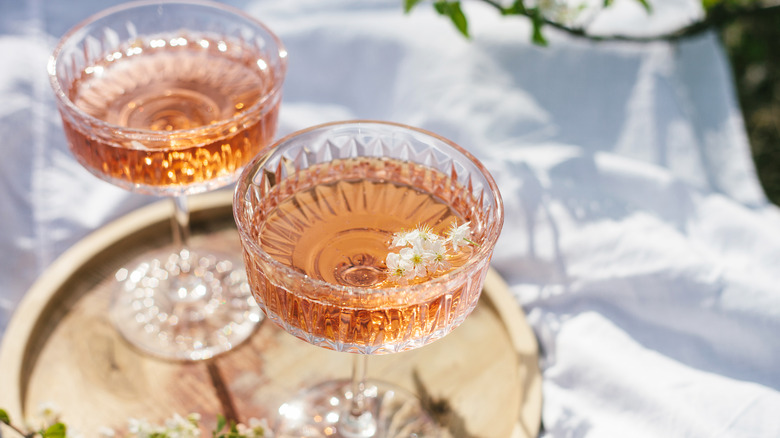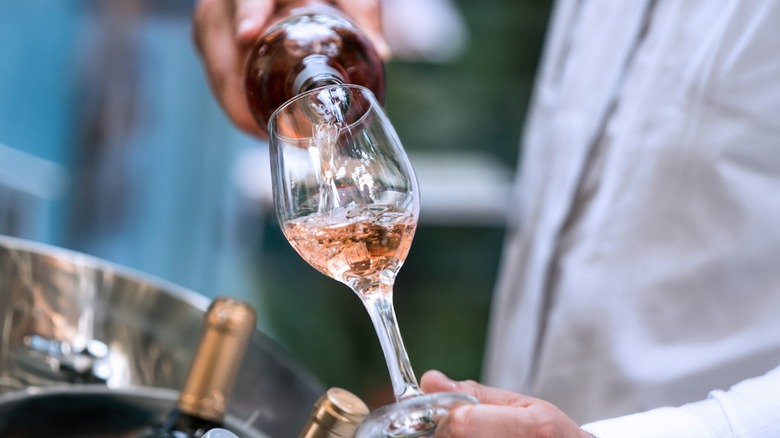Isn't Blush Wine Just Rosé?
Despite their shared pinkish shade, blush wine and rosé are not synonymous. But how they differ comes down to a few nuanced factors, like process, provenance, and price point, that are worth diving into.
Rosé is made from red grapes, typically grenache, pinot noir, sangiovese, and blends that might include mourvèdre or cinsault. Once the grapes have been pressed, the grape skins are left amongst the juice to give the wine its color. Robust red wines like cabernet sauvignon or syrah spend days or even weeks macerating to achieve their burgundy shade. To make rosé, on the other hand, winemakers stop the maceration process after a much shorter amount of time. (Food-friendly orange wine, if you're curious, is actually made like a red or rosé by leaving the skin in contact with the juices, but with white wine grapes instead.) The resulting wines are light, fresh, and quite dry, meaning rosé is perfect for amplifying with spice.
Surprisingly, rosé dates back to ancient Greece and Rome. But it's not shocking if you only started seeing rosé on menus in the last decade or so. According to a 2021 report from bw166, between 2010 and 2020 the volume of rosé sales increased by 1433% (via Forbes).
A breakdown of blush wine
Gillian Mosher, the Senior Director of Global Corporate Communications at NielsonIQ, broke down the basics of blush wine to Forbes. "Blush wines include all pink wine, including inexpensive box wine like white zinfandel. Rosé is usually more premium and has rosé on the label." While rosé and other types of blush wine share some similarities — light, crisp, and perfect for summer (or sipping with brunch) — rosé is a high-quality, carefully produced subset of blush wine, usually grown and bottled in Old World wine locales like Provence.
To keep the price point low, non-rosé blush wines are typically mass-produced. But that doesn't mean they're not worth trying or that their origins aren't worth investigating. The cheap, sweet version of blush wine began in California. In 1975, Sutter Home Winery in Napa Valley made a lucrative blunder when a dry version of their white zinfandel didn't finish fermenting. They decided to bottle and sell their mistake, which was higher in sugar and lower in alcohol, on the cheap, much to the delight (or chagrin) of the wine-drinking public. More recently, some New World wineries have been aiming to improve white zinfandel's reputation, so there are certainly a few blush wines beyond rosé that might be worth a taste test. The takeaway is simple: All rosés are blushes, but not all blushes are rosés — and both are worth a trip to the store for superb sipping.

